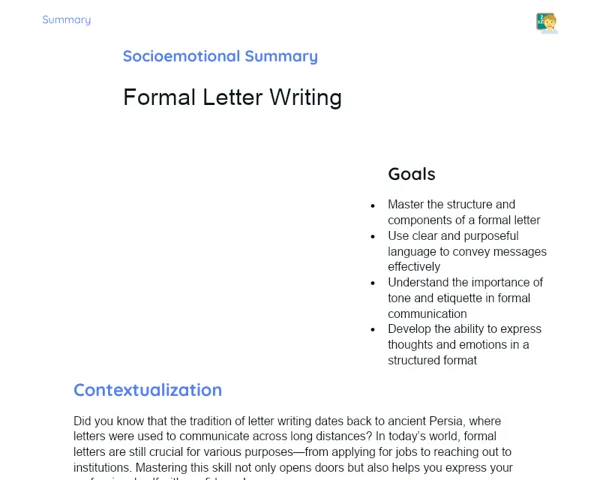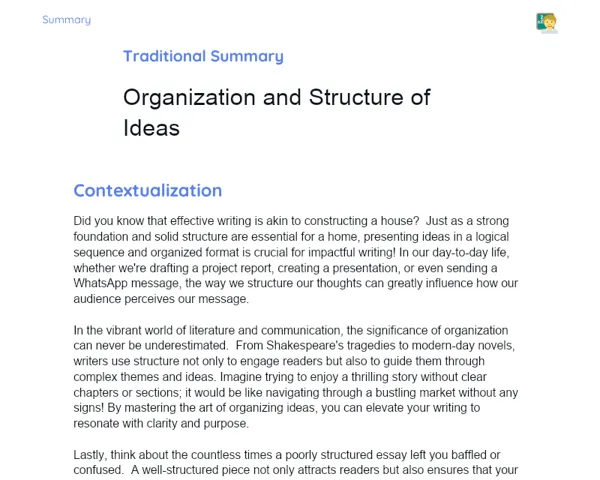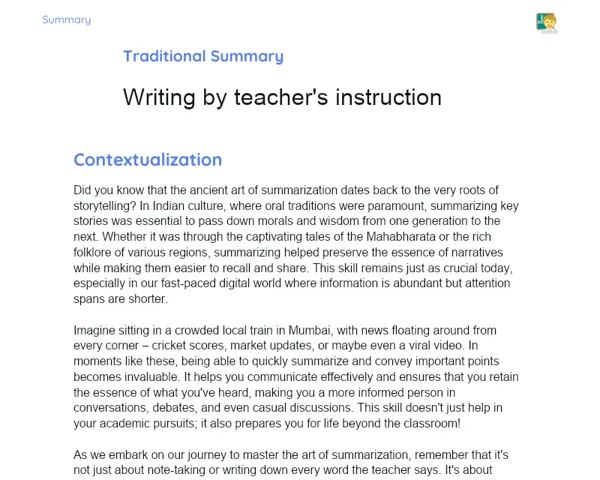Goals
1. Understand the structure and usage of the simple future in English.
2. Identify examples of the simple future in various texts.
3. Apply the simple future in practical, real-life scenarios.
Contextualization
The simple future tense in English is an important aspect of communicating plans, intentions, and predictions. Think about planning a family trip or discussing your future career; how would you convey these thoughts? Being able to speak about the future is crucial in many areas of personal and professional life. For example, when planning a vacation, you might say 'I will visit the Taj Mahal next year.' In an interview, you could state 'I will strive to achieve my professional goals.' These examples highlight how mastering the simple future can enhance your ability to communicate and plan effectively.
Subject Relevance
To Remember!
Structure of the Simple Future
The simple future is structured using the subject, followed by the auxiliary 'will' and the base form of the verb. This structure indicates actions that will take place in the future, regardless of their prior planning.
-
Subject + 'will' + base verb: This is the fundamental structure for creating sentences in the simple future.
-
Use of 'will': 'Will' acts as an auxiliary that signifies the future action.
-
Base verb: The verb maintains its base form without any changes.
Use of the Simple Future
The simple future is employed for making promises, offering help, predicting outcomes, and making snap decisions. While each use has its nuances, they all relate to future events.
-
Promises: 'I will always support you.'
-
Offers: 'I will help you with your project.'
-
Predictions: 'It will rain tomorrow.'
-
Quick decisions: 'I will call you later.'
Difference Between 'Will' and 'Going to'
While both 'will' and 'going to' are used to describe the future, they serve different purposes. 'Will' is typically used for spontaneous decisions and predictions, whereas 'going to' is reserved for premeditated plans and intentions.
-
'Will': Used for quick decisions and predictions.
-
'Going to': Used for plans and intentions that have already been made.
-
Example with 'will': 'I will travel to Mumbai next week.'
-
Example with 'going to': 'I am going to start my new job next month.'
Practical Applications
-
Career planning: Use the simple future to discuss your career goals in job interviews.
-
Market predictions: In roles like market research, the simple future is utilized to forecast economic trends.
-
Personal and professional planning: Create plans for travel, education, or personal projects using the simple future.
Key Terms
-
Simple Future: A verb tense that indicates future actions.
-
Will: An auxiliary verb used in forming the simple future.
-
Base Verb: The form of the verb that does not change in the simple future structure.
-
Going to: A structure employed to denote future plans and intentions.
Questions for Reflections
-
How can mastering the simple future enhance your job prospects?
-
Why is it imperative to make predictions using the simple future?
-
How can proficiency in the simple future improve your communication skills in both personal and professional environments?
My Future in 5 Sentences
This mini-challenge is designed to help you solidify your understanding of the simple future by applying it to real and personal contexts.
Instructions
-
Reflect on five different aspects of your future (career, travel, studies, hobbies, etc.).
-
Write one sentence for each aspect using the simple future with 'will'.
-
Make sure that each sentence is clear and straightforward.
-
Share your sentences with a colleague or a family member and invite them to ask about your plans.
-
Respond to their questions using the simple future to build your confidence and comfort with this verb tense.



